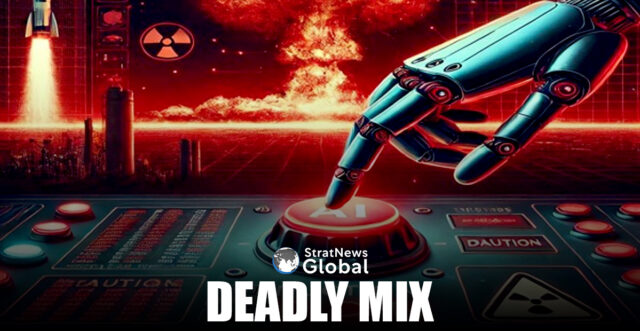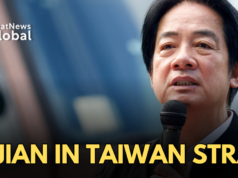A new report warns that the rapid integration of artificial intelligence (AI) into military arsenals by the United States, China, and Russia is heightening the risk of global instability, particularly in nuclear warfare.
Titled Averting AI Armageddon: U.S.-China-Russia Rivalry at the Nexus of Nuclear Weapons and Artificial Intelligence, the report, published by the Center for a New American Security (CNAS), highlights the emerging threats posed by AI-driven military technologies and calls for urgent policy action.
The report outlines how AI is increasingly being used for military applications, including nuclear command and control, battlefield analytics, autonomous weapons, and cyber warfare. While these technologies promise strategic advantages, they also introduce unprecedented risks, including automated escalation, miscalculation, and potential system failures.
“The world is shifting from a bipolar nuclear order to a more complex and volatile tripolar system,” the report states, referencing China’s rapid expansion alongside existing U.S. and Russian arsenals. AI’s role in military decision-making could lead to destabilizing scenarios where automated systems mistakenly interpret threats, potentially triggering catastrophic consequences.
The report highlights several major risks at the intersection of AI and nuclear strategy:
• Automation in Nuclear Command and Control: AI-enhanced decision-making tools could pressure leaders to act quickly in crisis situations, reducing human oversight.
• Single Points of Failure: AI-dependent systems could become vulnerable to hacking, malfunction, or adversarial manipulation.
• Entanglement with Conventional Military Systems: AI-driven conventional weapons could inadvertently escalate conflicts into nuclear engagements.
• Strategic Instability: Advances in AI-powered surveillance and tracking technologies could undermine traditional nuclear deterrence models.
The report also details the AI-driven military advancements of the world’s top nuclear powers:
• United States: The Pentagon is developing AI-powered intelligence and targeting tools, such as Project Maven and the Replicator program, while integrating AI into its nuclear command and control systems under the CJADC2 initiative.
• China: The People’s Liberation Army (PLA) is actively expanding its nuclear arsenal while advancing AI-driven decision-making systems and hypersonic weaponry.
• Russia: Moscow has been modernizing its nuclear forces and exploring AI-driven automation, including the controversial “Dead Hand” system, which could launch nuclear weapons autonomously in case of a perceived attack.
Despite these growing threats, diplomatic efforts to regulate AI in military applications remain limited. The United States has advocated for international norms on responsible AI use in warfare, while China and Russia have been hesitant to engage in binding agreements. The report calls for urgent policy measures, including:
• Strengthening human oversight in AI-driven nuclear operations.
• Establishing international agreements on AI use in military decision-making.
• Enhancing cyber protections to prevent AI system vulnerabilities.
Integrating AI into nuclear strategy without due diligence could have catastrophic consequences.
In a career spanning three decades and counting, Ramananda (Ram to his friends) has been the foreign editor of The Telegraph, Outlook Magazine and the New Indian Express. He helped set up rediff.com’s editorial operations in San Jose and New York, helmed sify.com, and was the founder editor of India.com.
His work has featured in national and international publications like the Al Jazeera Centre for Studies, Global Times and Ashahi Shimbun. But his one constant over all these years, he says, has been the attempt to understand rising India’s place in the world.
He can rustle up a mean salad, his oil-less pepper chicken is to die for, and all it takes is some beer and rhythm and blues to rock his soul.
Talk to him about foreign and strategic affairs, media, South Asia, China, and of course India.





